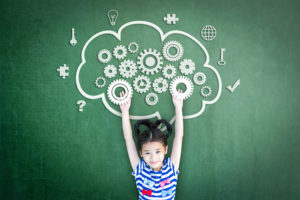3 ways that anxiety affects our bodies
The NHS defines anxiety as:
“a feeling of unease, such as worry or fear, that can be mild or severe”.
Anxiety UK suggest that 1 in 6 teenagers will experience anxiety. This means that on average there will be around 5 children in any given classroom experiencing anxiety.
Anxiety is a natural reaction to stress. Anxiety is a normal reaction and response which everyone experiences. Anxiety can affect children and adolescents through their feelings, thoughts and behaviours in their bodies. Anxiety can be made worst when children experience stressful situations. However, anxiety can become heightened, destructive or persist for long periods of time for some children.
Anxiety can leave us feeling:
- apprehensive
- panicked
- worried
- tense
- irritable
- uncertain
- nervous
- on edge
Anxiety creates a feeling that something bad or unpleasant might happen in the future. It is triggered by our brain’s individual perception of the environment. We will each interpret the environment in our own unique way depending on life experience, developmental stage, age, resilience and self-esteem. As our brain interprets the world around us it creates a set of responses.

If we consider how the brain develops, it has three key layers:
AMYGDALA – The threat centre – it asks ‘am i safe?’ ‘am I happy?’
LIMBIC BRAIN – The emotion centre – it creates emotional responses to the amygdala’s answers
PREFRONTAL CORTEX – Logic and reasoning – this does not develop until we are 12 and takes until we are 25 to fully develop
When the amygdala decides ‘I am NOT safe and I am NOT happy’ then it triggers the limbic brain and this creates feelings of anxiety. This creates a sensation that we need to ‘get away’ from the stressor or trigger, by creating a feeling of worry or panic. Anxiety creates different signs and symptoms in each individual.
This can create many different responses:
#1 – PHYSICAL
Physical sensations in the body such as heart racing, stomach aches, nausea, panic, breathlessness, headaches, sweating, coldness, restlessness……
#2 – THOUGHTS
Anxiety creates different thoughts in our minds, these can be catastrophizing (looking at worst case scenarios) – irrational thoughts – distortions hypothesising (what if) – negative thoughts – intrusive thoughts – these can be very alarming and upsetting for young people. These are fuelled by the ‘I am NOT safe I am NOT happy’ feelings and are encouraging our brain to leave for safety – even if we are not at risk.
#3 – PHYSIOLOGICAL
In some cases, anxiety can cause physiological changes in the body. This can be through weakness or fatigue, stomach aches or digestive issues, headaches and migraines, insomnia and sleep issues, excessive yawning, tremors, phantom smells or sounds, shortness of breath, dizziness, spots and acne.
What do we do?
When we experience anxiety we can take steps ourselves to help our brain feel safer. This includes:
- REGULATION – learning to regulate our body to remind it that it is safe – See ideas here
- Co-REGULATE – ensure that as adults we become the lighthouse – Read more
- WELL-BEING – Manage our overall wellbeing as a priority – Read more here
- BE ACTIVE – Use physical activity to build resilience – Ideas here
- LIFESTYLE – Consider the lifestyle choices we make to support mindset – Read here
- THERAPY – If symptoms persist, or cause distress consider therapy – Read more
Want to learn more?
If you want to learn more about mental health strategies you can join our Level 4 training (here).
© Dandelion Training and Development – All Rights Reserved
Further help
For more articles about mental health visit – ARTICLES
To learn more about child and adolescent mental health visit – COURSES
For resources to support child and adolescent mental health visit –RESOURCES

